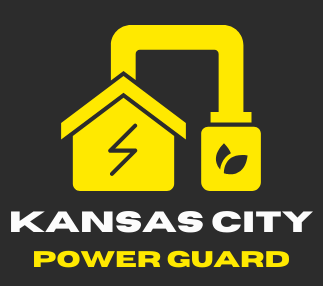
Standby Whole House Generators in Thornton, KS
Living in Thornton, KS offers the charm of a tight-knit community and the serenity of suburban life. However, like many places, it’s not uncommon to experience power outages due to severe weather, equipment failures, or other unforeseen events. These outages can disrupt daily routines and cause significant inconvenience. To ensure that your home remains comfortable and functional during these times, investing in a standby whole-house generator is a smart choice. Unlike portable generators, which have their limitations, standby generators offer a reliable and comprehensive power solution. Let’s explore what a standby whole-house generator is, how it compares to portable generators, the installation process, its benefits, and the maintenance needed to keep it running smoothly.
A standby whole-house generator is a backup power system designed to provide electricity to your entire home when the main power source fails. Unlike portable generators, which can only power a few devices or appliances at a time, a standby generator can handle all the electrical needs of a home. This includes essential systems such as heating and cooling, refrigerators, lighting, and more. The generator is connected to your home’s electrical system and automatically starts up when it detects a power outage, ensuring that your home’s power supply remains uninterrupted.
Power Capacity
The most significant difference between standby whole-house generators and portable generators is their power capacity. Standby generators are designed to supply enough electricity to run your entire home. This means you don’t need to decide which appliances to power or worry about managing power loads manually. Portable generators, in contrast, have a limited capacity and can only run a few appliances or devices at once. They are typically used for short-term or emergencies and may require you to prioritize which items to power, which can be inconvenient during extended outages.
Installation Process
The installation process starts with a thorough assessment of your home’s power needs. A professional installer will evaluate the size of your home, the critical systems you need to keep operational, and your preferred fuel type (natural gas or propane). This assessment helps in selecting the right size and type of generator for your specific needs, ensuring it provides adequate power without being oversized or underpowered.

We will get back to you as soon as possible.
Please try again later.
Electrical and Fuel Connections
Once the location is determined, the generator is connected to your home’s electrical system through a transfer switch. This switch automatically transfers power from the utility to the generator when an outage occurs and switches it back when power is restored. The generator is also connected to your fuel supply, whether natural gas or propane, ensuring it has a steady and reliable source of energy.
Continuous Power Supply
The primary benefit of a standby whole-house generator is its ability to provide uninterrupted power during an outage. This means all your essential systems and appliances—such as lighting, refrigeration, heating, and cooling—will remain functional without manual intervention.
Increased Property Value
Installing a standby generator can increase the value of your property. Potential buyers often view a reliable backup power system as a desirable feature, particularly in areas prone to power outages.
Convenience and Safety
Standby generators offer significant convenience and safety. The automatic operation means you don’t need to manage power manually or worry about refueling during emergencies. The permanent installation also reduces the risk of carbon monoxide exposure and other safety hazards associated with portable generators.
Home Protection
A standby generator helps protect your home from various issues related to power outages. This includes preventing frozen pipes during winter, avoiding spoiled food, and protecting sensitive electronics from damage. It also mitigates the risk of electrical surges when power is restored, safeguarding your appliances and devices.
Routine Testing
Even when not in use, it’s important to periodically run the generator to ensure it remains operational. Many systems have a self-test feature that runs the generator for a few minutes each week to keep it in good condition and identify potential issues early.
Oil and Filter Changes
Regular oil and filter changes are necessary to maintain the generator’s performance. Depending on usage, oil changes might be needed every 50 to 100 hours of operation or at least once a year.
Battery Maintenance
The generator’s battery should be checked regularly to ensure it has enough charge to start the unit when needed. A weak or corroded battery may need replacement to ensure reliable operation.
Professional Service
While some maintenance tasks can be done by homeowners, periodic professional servicing is crucial. A qualified technician can perform detailed inspections and necessary repairs to ensure your generator runs efficiently and safely.
A standby whole house generator in Thornton, KS, provides a reliable and effective solution to ensure your home remains powered during outages. Unlike portable generators, which have limitations and require manual operation, a standby generator offers automatic, continuous power for your entire home. Proper installation and maintenance are key to keeping your generator in top shape, ensuring it protects your home and family from the unpredictability of power disruptions. Investing in a standby generator is a proactive step towards safeguarding your home and maintaining comfort during power outages.
Let's Connect!
We offer expert services in standby whole-house generators, ensuring your home stays powered during outages. Our team provides professional installation, maintenance, and support, delivering peace of mind to homeowners. Hire us today for reliable backup power solutions tailored to your needs.